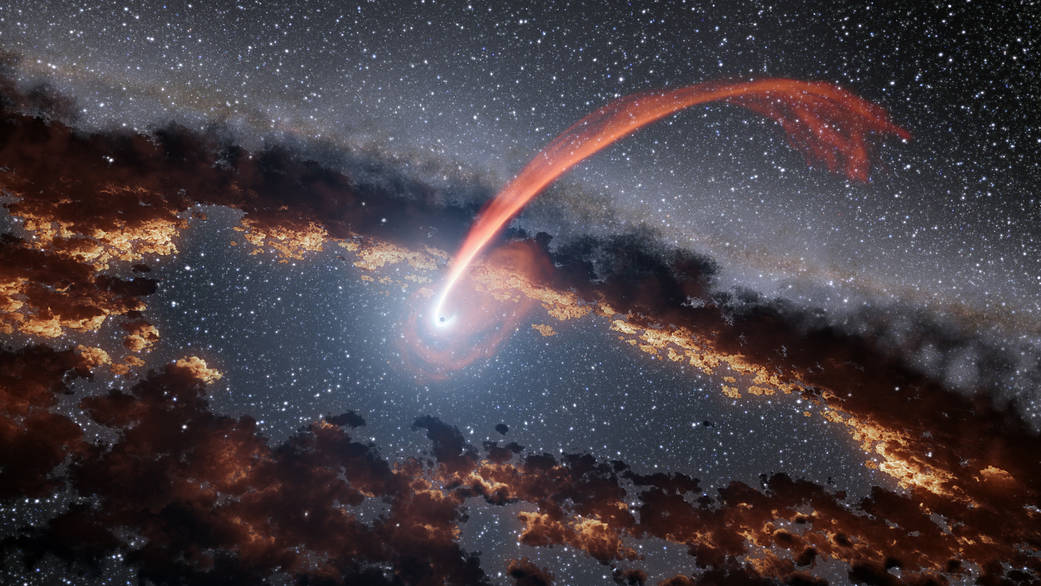
This illustration shows a glowing stream of material from a star, disrupted as it was being devoured by a supermassive black hole. The feeding black hole is surrounded by a ring of dust. This dust was previously illuminated by flares of high-energy radiation from the feeding black hole, and is now shown re-radiating some of that energy as heat in the infrared part of the spectrum.
When a star passes within a certain distance of a black hole — close enough to be swallowed up — the stellar material gets stretched and compressed as it is pulled in. A black hole’s destruction of a star, called “stellar tidal disruption,” releases an enormous amount of energy, brightening the surroundings in an event called a flare. In recent years, a few dozen such flares have been discovered, but they are not well understood.
Astronomers gained new insights into tidal disruption flares thanks to data from NASA’s Wide-field Infrared Survey Explorer (WISE). Studies using WISE data characterized tidal disruption flares by studying how surrounding dust absorbs and re-emits their light, like echoes. This approach allowed scientists to measure the energy of flares from stellar tidal disruption events more precisely than ever before.
JPL manages and operates WISE for NASA’s Science Mission Directorate in Washington. The spacecraft was put into hibernation mode in 2011, after it scanned the entire sky twice, thereby completing its main objectives. In September 2013, WISE was reactivated, renamed NEOWISE and assigned a new mission to assist NASA’s efforts to identify potentially hazardous near-Earth objects.
For more information on WISE, visit: https://www.nasa.gov/wise
Image credit: NASA/JPL-Caltech


























